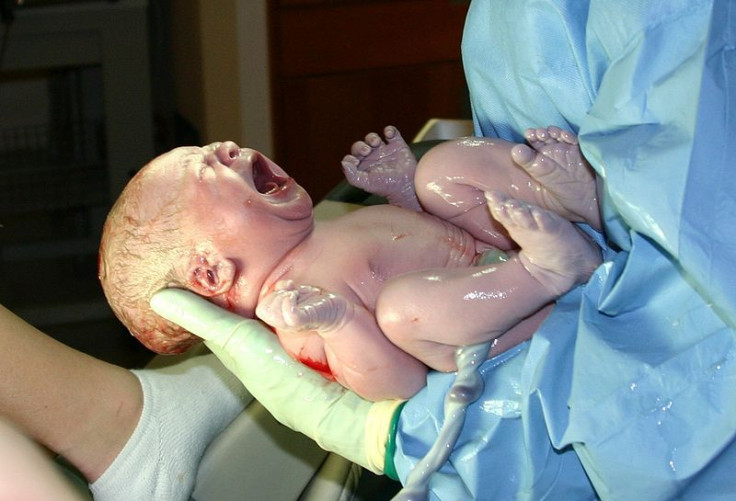10% Of Congenital Heart Disease Defects Are Caused By Spontaneous Genetic Mutations Not Found In Parents

Among the most frequent birth defects is a severely malformed heart, which affects eight out of every 1,000 newborns, or 35,000 babies born in the U.S. each year. Now, research shows that about 10 percent of these defects, known as congenital heart disease (CHD), are caused not by genes inherited from the parents but by spontaneous mutations in several hundreds of a newborn's genes.
Seeing a child born with a heart defect yet surrounded by healthy parents and siblings, researchers have long suspected that a new mutation - known as a de novo mutation - might contribute to congenital heart disease (CHD). "Until recently, we simply didn't have the technology to test for this possibility," said Richard Lifton, a Howard Hughes Medical Institute (HHMI) investigator.
Lifton, who is at Yale School of Medicine, collaborated with Christine Seidman, an HHMI investigator at Brigham and Women's Hospital, and other colleagues to study CHD through the National Heart Lung and Blood Institute's Pediatric Cardiac Genomics Consortium. They compared the incidence of de novo mutations in cases of children born with congenital heart disease as well as controls, and published their findings online in the journal Nature yesterday.
Spontaneous Mutation
For the study, investigators began with 362 families consisting of two healthy parents with no family history of heart problems and a child with severe congenital heart disease. By comparing genomes within families, they could pinpoint mutations that were present in each child's DNA, but not in his or her parents. The team also studied 264 healthy families to compare de novo mutations in the genomes of healthy children.
CHD defects can involve the walls of the heart, the valves of the heart, and the arteries and veins near the heart. They can disrupt the normal flow of blood through the heart. The blood flow can slow down, go in the wrong direction or to the wrong place, or be blocked completely.
Using new sequencing technologies, the researchers compared the protein-coding regions of the genomes. The results demonstrated that new mutations in several hundred different genes contribute to the birth defect in different patients, but were concentrated in a pathway that regulates key developmental genes. These genes affect the epigenome, a system of chemical tags that modifies gene expression.
The team focused their gene-mutation search on the exome, the small fraction of each person's genome that encodes proteins, where disease-causing mutations are most likely to occur. Children with and without congenital heart disease had about the same number of de novo mutations - on average slightly less than one protein-altering mutation each. However, the locations of those mutations were markedly different in the two groups.
Although the study established mutations in a variety of genes, one cellular pathway was markedly enriched in the children with heart defects. That pathway helps regulate gene activity by affecting how DNA is packaged inside cells. Essentially, the body's DNA is wrapped around proteins called histones, and chemical tags called methyl groups are added to histones to control which genes are turned on and off. In children with congenital heart disease, the team found an excess of mutations in genes that affect histone methylation at two sites that are known to regulate key developmental genes.
"The mutations in patients with congenital heart disease were found much more frequently in genes that are highly expressed in the developing heart," said Seidman.
When the researchers focused on mutations most likely to impair protein function, the differences became dramatic. In these areas, children with severe congenital heart disease were 7.5 times more likely than healthy children to have a damaging mutation.
Overall, the researchers found that de novo mutations contribute to 10 percent of cases of severe congenital heart disease. Roughly a third of this contribution is from the histone-methylation pathway, said Lifton, who highlighted the fact that a mutation in just one copy of a gene in this pathway was enough to substantially increase the risk of a heart defect.
Related Study for Autism
Previously, Lifton and HHMI investigator Evan Eichler have used direct sequencing of protein-coding regions of the human genomes to search for de novo mutations implicated in another congenital disease - autism.
In this earlier research, Lifton found mutations in some of the very same genes affected by congenital heart disease. Because the same histone modification pathway appears to play a major role in both autism and CHD, this raises the possibility that this pathway may be perturbed in a variety of congenital disorders, Lifton said.
Identifying the mutations responsible for CHD might help physicians better care for affected children, even if they are unable to find ways to prevent the disease. "After we repair the hearts of these children, some children do great and some do poorly," said Seidman. Because of this, many researchers suspect such differences in outcome are due to the differences in underlying cause. Once all the variations are understood, though, doctors believe they will be able to improve the health and future lives of their patients.
Lifton R, Seidman C, et al. De novo mutations in histone-modifying genes in congenital heart disease. Nature. 2013; doi:10.1038. http://www.nature.com/nature/journal/vaop/ncurrent/full/nature12141.html. Accessed May 13, 2013.



























